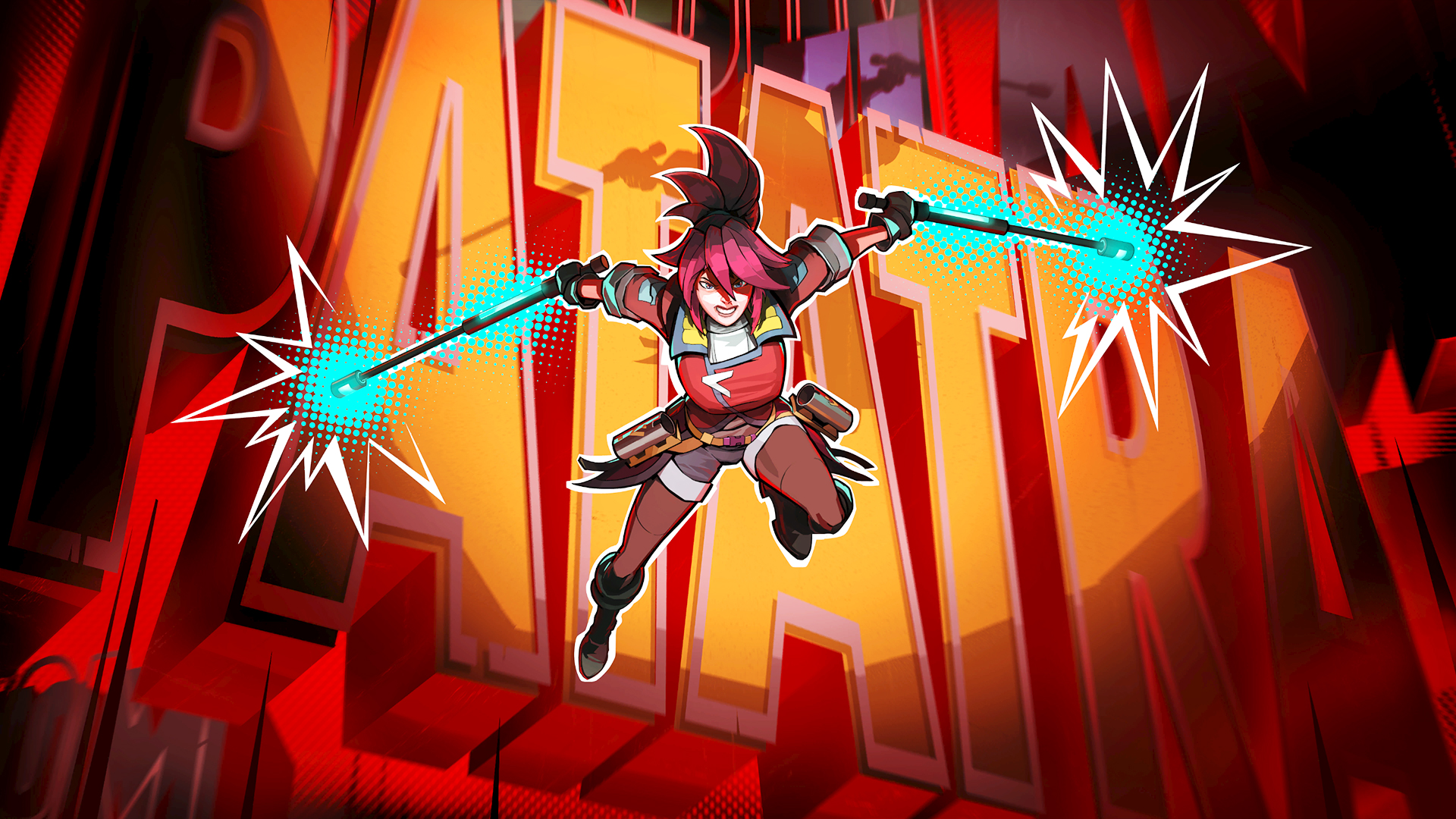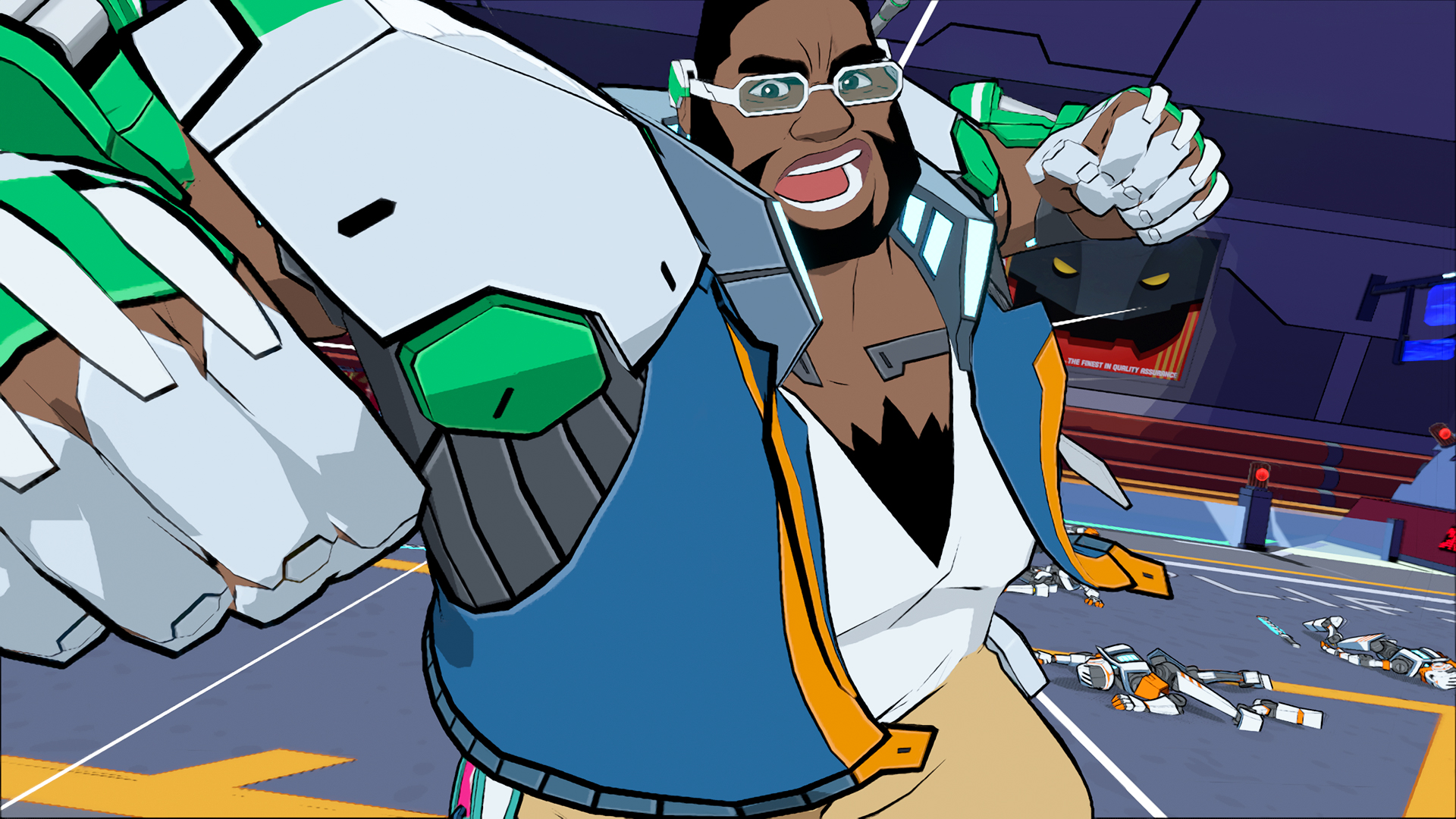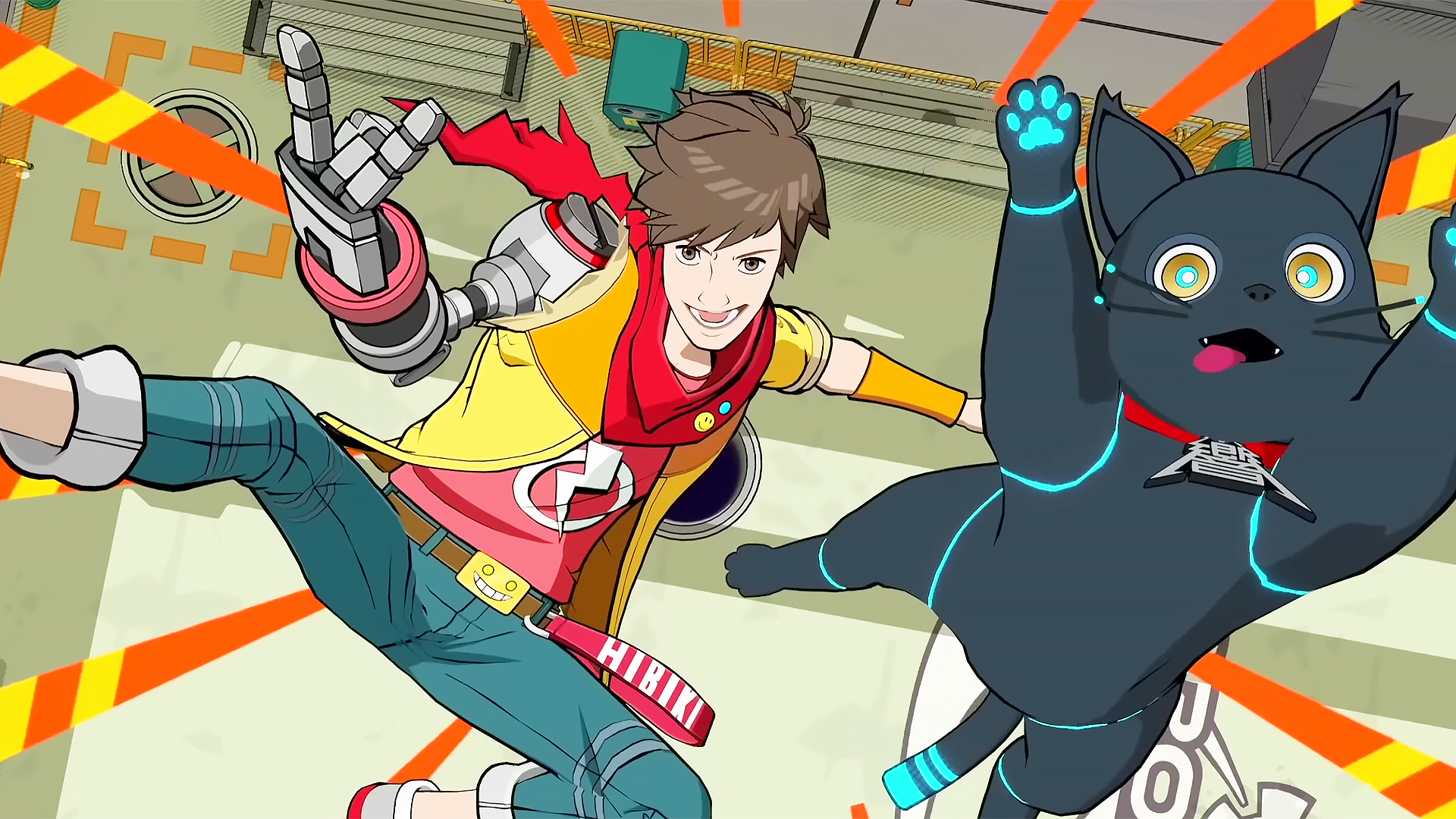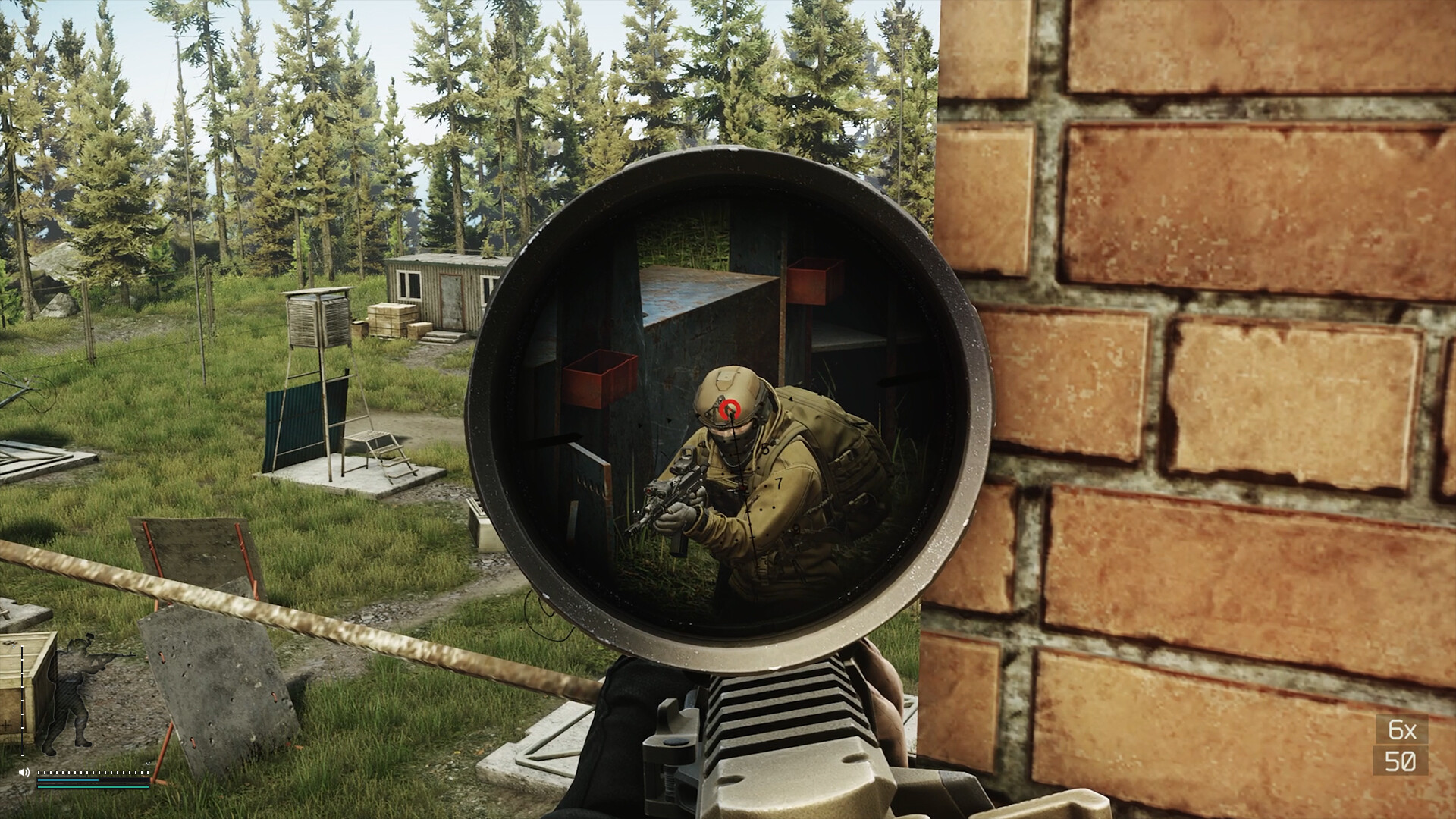Our Verdict
Despite it's killer opening act, Hi-Fi Rush fails to sustain its blend of rhythm and action all the way until the end.
PC Gamer's got your back
What is it? A cel-shaded rhythm action game with a mid-2000s rock soundtrack.
Expect to pay: $30
Release date: January 25, 2023
Developer: Tango Gameworks
Publisher: Bethesda Softworks
Reviewed on: RTX 3080, Ryzen 9 3900X, 32GB RAM
Multiplayer? No
Link: Official site
For all of its screaming electric guitars and raucous drums, Hi-Fi Rush is surprisingly low-key. Smashing apart killer robots to the beat of licensed rock tracks from artists like Nine Inch Nails, The Black Keys, and The Prodigy is rad as hell. It's like going for a run and trying to sync each step to the album you're jamming to. It's playing Devil May Cry, but every drum hit in Bury the Light is an opportunity to continue your combo. But after establishing its hook in a killer opening, Hi-Fi Rush's high energy starts to wane.
Hi-Fi Rush has a bright, cel-shaded world and top-heavy killer robots, the kind of goofy aesthetic that'd play well on a blurry TV screen in the background of an NCIS episode—it looks extremely like a videogame from the mid-2000s. It's largely the music, combined with its snappy animation style, that elevates this simple aesthetic. Trees, lampposts, and pipes bounce along to the soundtrack, and main character Chai is constantly snapping his fingers, which causes a tiny comic book spark to appear each time.
Vandelay Technologies, the evil corporation that accidentally replaced Chai's heart with a Walkman, is the stage. It started out manufacturing robotic limbs for people in need, and then pivoted to selling helpful robots that are a software update away from becoming an army. The man at the top, Kale Vandelay, has a very cartoon villain plan to use the implants for mind control.
Everything in Hi-Fi Rush runs on classic cartoon logic. Chai casually dusts himself off after being punched through a wall and, in one scene, faces the camera in shock just before he plummets down a chute like a Looney Tunes character. He isn't bright but neither are a lot of the characters in Hi-Fi Rush. At times Chai sounds frighteningly close to a Joss Whedon character. I'm pretty sure he did a "Well that just happened!" in the first hour.
Chai's incompetence is the point, and the game quickly partners him with a crew of much more interesting and charming characters to bounce off. Peppermint and her cute robotic cat, 808, team up with Chai to go after Vandelay's C-suite. Soon you meet Macaron, a pacifist robotic psychological analyst with a metal buddy named CNMN (pronounced like cinnamon). And a fourth character that I won't spoil, but will say is fun to have around even if their accent is totally incomprehensible.
Band together
All of these characters (except CNMN) are available as summons during the beat-based combat. Chai has heavy and light attacks that you can combo together and end with a finisher in time with the song. At any moment (or as a finisher) you can pull in a teammate to help you. Peppermint blasts enemies with her gun and is necessary for knocking enemy shields out. Macaron smashes armor apart, and the final character you get is able to douse pockets of fire in the arena.
As you progress and defeat bosses that test your parry timing and sometimes become just literal rhythm games, you can buy additional moves and passive bonuses. By the end I could grapple toward a robot, launch them into the air, and then call in Peppermint to fire a massive laser beam into them, and if that didn't cut it I had Macaron on standby to smash them into scrap metal. Because the enemies only attack on the beat and are telegraphed with lines and circles on the ground, you can easily dodge or parry them back for damage. Some attacks can only be dodged, but spamming parry when the song lined up just right almost always kept me safe.
Keep up to date with the most important stories and the best deals, as picked by the PC Gamer team.

I'm not sure if it's because I funneled a lot of my upgrades into lowering the cooldown on the summons or by playing on normal difficulty, but Hi-Fi Rush eventually stopped being much of a rhythm game halfway through. The game starts to use original songs that all feel like a similar tempo and aren't particularly memorable and the combat loses all its oomph. I was suddenly playing an OK character action game where every fight I cycled through my summons and performed simple combos until the score screen came up. Other than a few gimmicky boss mechanics, Hi-Fi Rush rarely pushes back on button spam. And without recognizable music or challenging tempo shifts, everything blends together.
The only place the music remains important are the sections in between each battle arena. Geysers of lava and other environmental hazards make up the platforming sections. You have to time your jumps and quickly summon a teammate to break through shields and doors before the next beat hits. Sometimes the game even locks the camera and becomes a sidescroller. Nailing these parts without dying or breaking your rhythm is like making it through a Mario level on pure reflex. The song guides you through the obstacles. You almost don't have to look at the screen.
Hi-Fi Rush's setlist is too limited to fully embrace its chosen era of music.
The exploration sections are where the mid-2000s vibe begins to feel a little like a curse. There are crates to smash, collectibles to find, text logs to read, and power-ups for your health and special attack meter hidden throughout each level, but all of it just slows the game down. I was strong enough for anything Hi-Fi Rush could throw at me after only a few hours, and there were only so many emails I could read about robot labor abuses and incompetent bosses. Nostalgia for this era of games (if you even have it) can't make up for the hours you spend dashing past a bunch of stuff you don't need.

Hi-Fi Rush's commitment to the marginalia of the games it's aping is impressive for its specificity, but makes me wonder if it could have retained a retro feel without it. A dull lead with a group of way more interesting secondary characters and only a handful of solid licensed rock songs struggle to match the energy of the game's first few hours. Another version of this game could have swapped Chai out with Peppermint and filled the tracklist with sharper rock and punk hits that match the anti-capitalist message the game is reaching for but can't quite grasp by the end.
As a surprise from a developer known for its horror games, Hi-Fi Rush is a promising concept. A sequel that refines its samey level design and combat and expands its list of songs could be the game I wanted Hi-Fi Rush to be. As an average action game with a handful of stellar moments that heavily rely on its rhythm-based structure, it's not worth choosing over all the other great options in the genre.
Hi-Fi Rush is like going back and listening to the songs you listened to as a teen. Sugar, We're Going Down still goes incredibly hard, but Fall Out Boy's newest songs are able to nod at their roots and incorporate enough modern production and structure to sound like something new. Hi-Fi Rush's setlist is too limited to fully embrace its chosen era of music, and it's too dated to resonate with what's hot right now. It's stuck, unable to fully commit to its own pitch and unable to capture the moment. It's a strong teaser for a more cohesive game, and it has me crossing my fingers that one day it will come.
Despite it's killer opening act, Hi-Fi Rush fails to sustain its blend of rhythm and action all the way until the end.
Tyler has covered videogames and PC hardware for 15 years. He regularly spends time playing and reporting on games like Diablo 4, Elden Ring, Overwatch 2, and Final Fantasy 14. While his specialty is in action RPGs and MMOs, he's driven to cover all sorts of games whether they're broken, beautiful, or bizarre.


